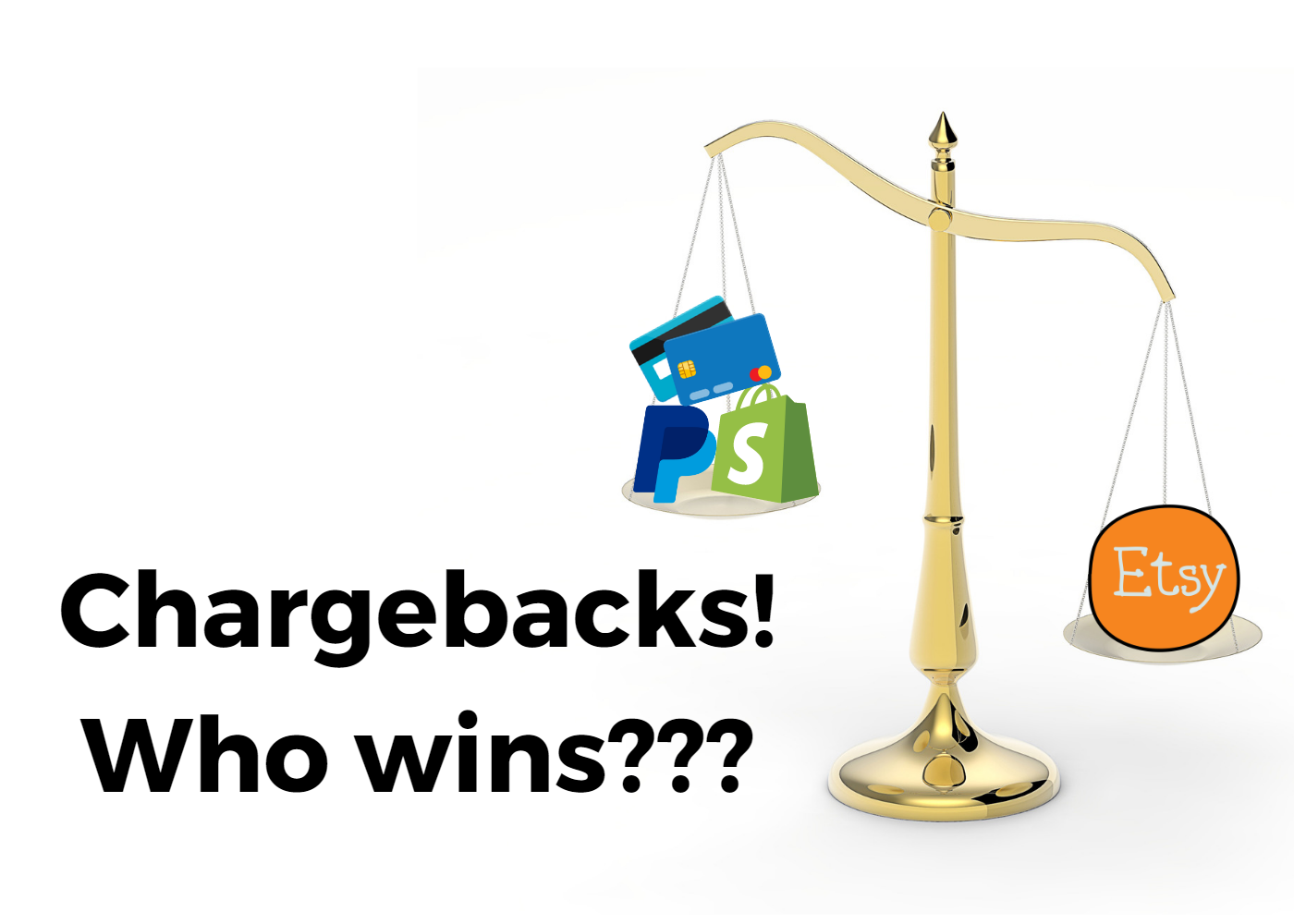
Etsy Fees Aren’t as Bad as You Think – Chargebacks
Posted on
Last Updated

Posted on
Last Updated
Is Etsy really that expensive? Mebbe not!
Let's dive into chargebacks!

A lot of people argue that Etsy’s fee structure is just too high. Granted, Etsy does charge a much higher transaction fee compared to a traditional payment processor. But Etsy gives you a lot for that fee.
In this case I’m going to focus on chargebacks and explain why Etsy wins in this category.
A chargeback is when a customer tells their bank/credit card company that they didn’t authorize the transaction and they want a refund. It’s not very common, but it does happen. Depending on the bank/credit card company, a customer may have 60 to 120 days to dispute the charge and claim a chargeback
Usually this happens well after the order was delivered so the product has already been shipped out and the seller no longer has it.
So at this point, the seller will probably never see that product again and has the sale removed from their bank account. They’ve made zero dollars lost a product they could have sold.
But it’s what happens next that really hurts.
First, the payment processor keeps the transaction fee. Or to put it a different way, the seller has paid an extra 2%-5% to lose whatever product was ordered. This might seem weird, but the payment processor fees are charged separately from the deposit of the money to the seller. So when the money is taken from the seller, the fee remains.
For example, let’s say a customer orders $100 worth of product. The payment process deposits the $100 to the sellers bank and charges their fee of $3 to the seller. That leaves $97 in the bank. When the chargeback happens, $100 is taken from the sellers bank account leaving a negative balance of -$3.
The payment processor argues that they have provided the service that they are paid for so they don’t have to refund the transaction fee.
Ok… so at this point the seller has lost $3 and some product. Because the seller can’t sell that product, that’s $100 loss as well so now we’re up to $103 in losses.

When the payment processor returns the money to the customer’s bank, they also charge the seller a “chargeback fee” of $20-$100.
“It’s estimated that for every $100 in chargebacks, your true chargeback cost is $240 in wasted time, expensive fees, penalties or additional losses of goods and services.”
https://chargebacks.com/true-cost-chargebacks/
That’s $240 for one chargeback! And it only gets worse with each chargeback as the payment processor usually increases the chargeback fee for each chargeback.
It’s pretty much the same, but completely different!
Etsy doesn’t charge a charge back fee.
Also, Etsy’s Seller Protection program covers the losses so the seller never loses anything!
So if the average cost of a $100 chargeback is $240 and the difference between Etsy’s fees (6.5%) and the payment processor fees (3%) comes out to 3.5%, what the real difference?
For just ONE chargeback of $100, you would need to sell $6857.14 MORE using a traditional payment processor to offset the 3.5% difference!
Etsy gets a bad rap quite a bit. But there are so many things that Etsy brings to the table that get overlooked.
In this case, I think that the Etsy fees are well worth the protections.
Until next time…
